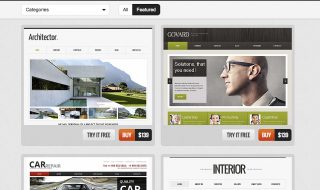
Adobe is going all out to ensure that developers can create sites that perform equally well on different types of modern devices, from mobile tablets and smartphones to laptops and desktops.
Adobe Muse – Make It Mobile.
Muse is one of the methods Adobe is offering to help designers tackle this issue. This app for web designers is available as part of the Adobe Creative Suite’s subscription version, the Creative Cloud.
Muse is available by itself (without a cloud subscription) at $25 per month or $15 per month if you sign up for the whole year. According to the company, Muse is all about making a website without any coding; just draw and add widgets and fonts (somewhat like the Adobe InDesign process). It’s a perfect tool for visual and graphic designers who don’t want to depend on developers and programmers to create their websites. Currently the Web font library has over 550 fonts, so you are sure to find one that tickles your fancy and fits into your projects.
Adobe’s New Muse

Adobe Muse Website Design Tool
Adobe has been announcing regular updates for this tool; several interactive tools were added in August of last year, and mobile website support was introduced in December 2012.
Let’s take a look at the latest updates:
-
Muse has a Master layout from where you start creating your site. The update introduces the notion of hierarchical master pages; that is, several masters that have the ability to receive specific elements of a page from other master pages. You can also have custom headers, footers and other elements for particular sub pages, and choose whether to position the elements in the foreground or background.
-
Added functionality of previewing the created site on Smartphones and Tablets.
Widgets are a crucial part of Muse; now they have been touch enabled. You can swipe thru the slideshows; there is a lot more control over them than before. -
A new spell checking tool has been added.
-
Added support and bug fixes for menu and submenu selection.
-
Sites built on the Muse platform are easy to publish to the Business Catalyst hosting servers from Adobe; you can also publish them to your own hosting servers via FTP (or by exporting the HTML). The update simplifies managing your site by allowing the publishing of your site to the Business catalyst or your own FTP servers, on a subdirectory. If you’re a Creative Cloud subscriber you can host 5 sites on Catalyst, and 1 if you only have Muse.
-
Enhanced performance of Muse based sites built and compatibility with the most common web browsers has also been ensured with the help of CSS3.
-
Hyperlinks take you to device specific layouts. When you’re browsing a Muse based site on your mobile device, the layout pertinent to your device (according to screen size etc) will be automatically loaded. If you want to do so, you can even link to a page that has been designed for another device.
-
There is now the ability to create site plans and separate layouts for specific devices like laptops, tablets and so on. The Add layout option allows you to copy the site plan and Master backgrounds to create additional layouts for separate devices.
-
You can also check how your site will look on different devices with the Preview Device option; the dimensions of various devices are shown you so that you can see how the site will look on those devices.
What is your favorite new feature? Have you used Muse? Let us know in the comments below! Thanks for reading!



